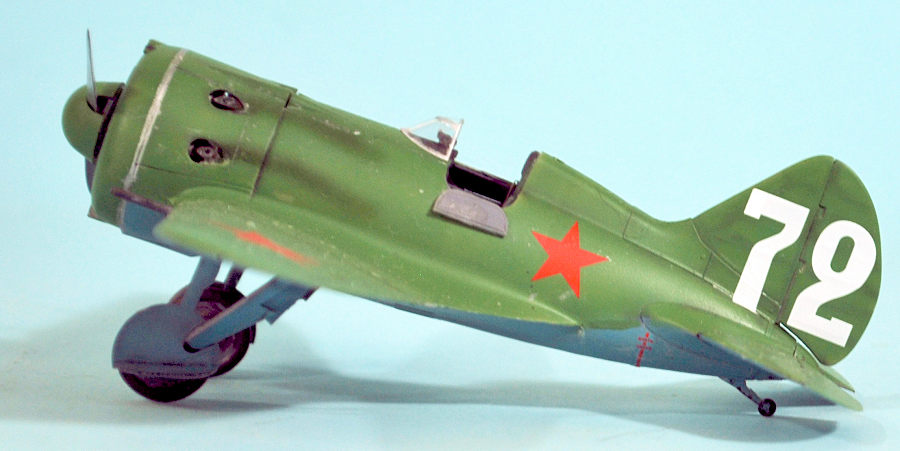
| KIT #: | 48097 |
| PRICE: | $30.00 |
| DECALS: | Four options |
| REVIEWER: | Tom Cleaver |
| NOTES: |

| HISTORY |
Nikolai Polikarpov was perhaps the leading Russian aircraft designer in the early days of the Soviet aircraft industry. In 1918, he was put in charge of preparing manufacture of the DH-4 at the GAZ-1 facility where at least 63 were completed. Focus then switched to the DH-9A; Polikapov headed the team charged with adapting the type for local production as the R-1, which became the first mass-produced soviet warplane.
By 1930, Soviet aircraft design in particular had made great strides. The Air Force's scientific research institute (the NII V-VS) was producing outlines for the future of combat aircraft. Few people in the west at that time realized just how advanced things were aeronautically in the USSR. With the powerplants and construction of the time, superior speed could be gained from a monoplane yet biplanes were clearly more maneuverable. The solution prescribed by the NII was a mixed fighter force of fast monoplanes and agile biplanes.
Polikarpov and his team designed the I-5 in 1930 while imprisoned by the NKVD on a charge of “sabotage;” the designs success led to their release. The I-5 led to the I-15 series that culminated in the I-153, the last monoplane fighter ordered into production by an air force in 1938.
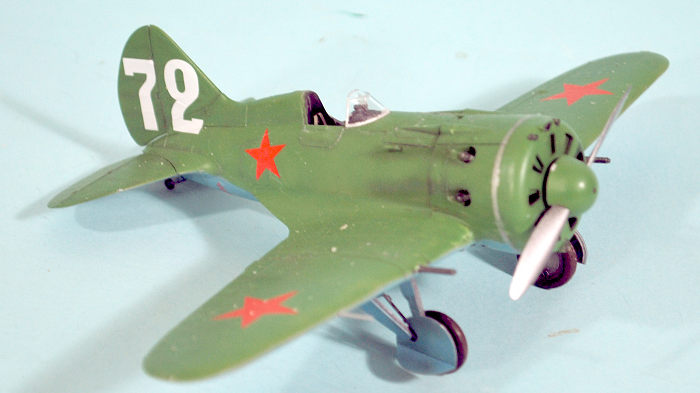 In
1931, A. N. Tupelov was assigned the task of designing the new monoplane
fighter, since the Tupolev Bureau had extensive experience of monoplane design.
Pavel Sukhoi was put in charge of design and the result was the I-14, which flew
in early 1933 - an all metal cantilever monoplane with retractable
undercarriage; this at a time when the RAF was celebrating adoption of the
Hawker Fury biplane and Boeing’s P-26, with external bracing and fixed gear, was
adopted by the USAAC as its first monoplane fighter, and the Arme de l’Air
adopted the D.500 with cantilever wings and fixed gear.
In
1931, A. N. Tupelov was assigned the task of designing the new monoplane
fighter, since the Tupolev Bureau had extensive experience of monoplane design.
Pavel Sukhoi was put in charge of design and the result was the I-14, which flew
in early 1933 - an all metal cantilever monoplane with retractable
undercarriage; this at a time when the RAF was celebrating adoption of the
Hawker Fury biplane and Boeing’s P-26, with external bracing and fixed gear, was
adopted by the USAAC as its first monoplane fighter, and the Arme de l’Air
adopted the D.500 with cantilever wings and fixed gear.
Meanwhile, Polikarpov sought permission to design a rival to the I-14. Design work on his new monoplane fighter, the TsKB-12, commenced in March 1933, In December the all-red prototype first flew with Valery P. Chkalov at the controls. The Tupelov I-14 had flown eight months earlier but there were several problems, including slow recovery from spins. Work on the I-14 was discontinued after 22 had been built.
Polikarpov's new monoplane was of mixed construction. The fuselage was a monocoque made up of glued birch laths laid up over a basic four longeron frame with 11 stations. The completed wooden shell was covered with a madapolan type fabric for strength and sealing. The wing had a chrome-molybdenum steel tube truss-type center section, skinned in aluminum, while the outer wings had steel tube truss-type spars with steel sheet webs, and aluminum ribs, being covered in aluminum and fabric. The ailerons were also aluminum covered with fabric; with no flaps, these drooped 15 degrees for approach and landing. The tail surfaces were also fabric covered aluminum. The undercarriage retracted inwards through a complex series of cables and pulleys, all operated from the cockpit by manual winding. The cockpit was fully enclosed, with a canopy sliding forward for entry; this proved unpopular with pilots and was later replaced by a simple windscreen.
While the I-16 was thought in the west to be a copy of the Boeing P-26, that was not the case. In the early 1930s, high speed aerodynamics were little understood and if the I-16 shared anything in common with any American designs, it would have been American race planes such as the Gee Bee or the Turner Meteor, with its short-coupled design - at the time the only way a designer knew to create speed. The I-16 additionally shared difficult flying characteristics not all that different from its American racer cousins - an American pilot who flew it in combat in Spain said that a pilot couldn’t take his attention off flying it for am instant without getting into trouble.
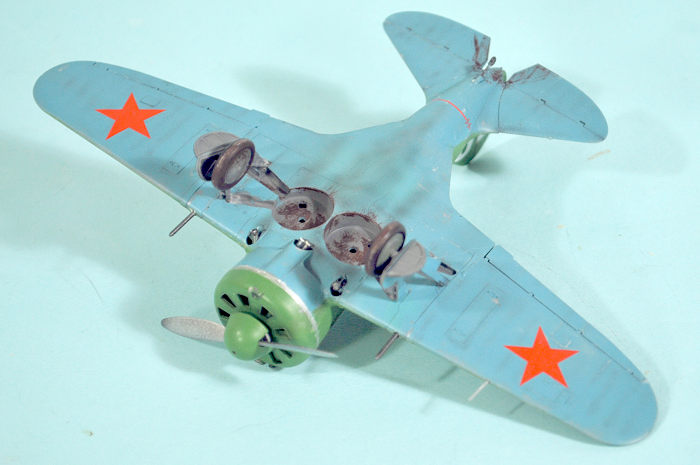 Armed
with two unsynchronized 7.62mm ShKAS machine guns in the wings, which provided
twice the rate of fire of any other aircraft machine gun in the world, the I-16
attained 224 mph at sea level and was supremely maneuverable for a monoplane.
Deliveries of the I-16 Type 1 to the V-VS began in the late summer of 1934; it
was displayed publicly for the first time at the 1935 May Day Parade, with
several formations flown over Red Square. At this time, the RAF had yet to order
the Gloster Gladiator into production, and the Luftwaffe was only beginning to
take delivery of the Heinkel He-51, while the Dewoitine D.500 had only just
entered Escadrille service with the Armee de l’Air. Even with this public
display, the I-16 roused no interest by Western aviation authorities, even after
large numbers took part in the large-scale autumn maneuvers held outside Kiev
that year, an event attended by Western military attaches.
Armed
with two unsynchronized 7.62mm ShKAS machine guns in the wings, which provided
twice the rate of fire of any other aircraft machine gun in the world, the I-16
attained 224 mph at sea level and was supremely maneuverable for a monoplane.
Deliveries of the I-16 Type 1 to the V-VS began in the late summer of 1934; it
was displayed publicly for the first time at the 1935 May Day Parade, with
several formations flown over Red Square. At this time, the RAF had yet to order
the Gloster Gladiator into production, and the Luftwaffe was only beginning to
take delivery of the Heinkel He-51, while the Dewoitine D.500 had only just
entered Escadrille service with the Armee de l’Air. Even with this public
display, the I-16 roused no interest by Western aviation authorities, even after
large numbers took part in the large-scale autumn maneuvers held outside Kiev
that year, an event attended by Western military attaches.
In February 1934, the I-16 flew with an M-25 engine - the license-built version of the Curtiss-Wright Cyclone 9 - which had 50 percent more power than the M-22, and raised the I-16's top speed from 224 to 282 mph. The I-16 Type 4, which appeared in late 1935, adopted this powerplant for production.
The outbreak of the Spanish Civil War on July 18, 1936, provided Germany, Italy and the Soviet Union with the opportunity to field test their newest military equipment. 31 I-16 Type 5s were sent to Spain in October. Two squadrons - known as Escuadrillas de Moscas - were immediately formed. The Spanish had adopted the Russian nickname for the I-16 - “Mushki” or “fly” - as the official name, “Mosca.” The Escuadrillas were based at a secret airfield in Camposoto on the estate seized from the Falangist Duke of Albuquerque, where they operated undiscovered over the next year.
On November 15, 1936, two Moscas encountered three
Italian C.R.32s without result. The next day four Moscas flew top cover to Pavel
Rychagov’s Escuadrilla de Chatos of
1-15s. The I-15s were attacked by an Italian-Spanish unit of C.R.32s that
included Joaquin Garcia Morato, the future Falangist ace of aces. Two I-15s were
lost for three C.R.32s; the I-16s failed to engage. On November 17th five Moscas
intercepted an Escuadrilla of Junkers
Ju-52/3m g3e bombers and were bounce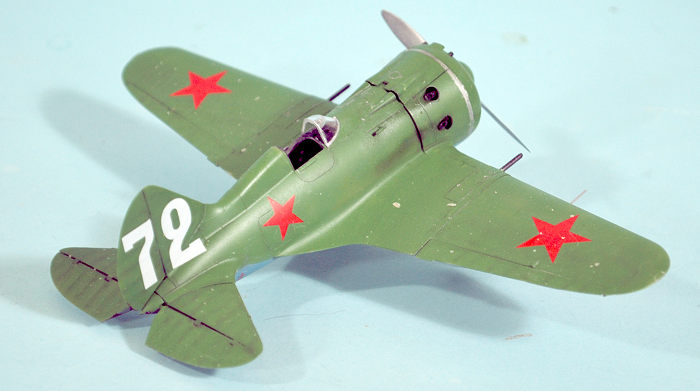 d
by seven C.R.32s, losing one Mosca.
From this point on, fights between the Moscas and the Nationalist fighters
quickly demonstrated the I-16 could hold its own with the C.R.32, and completely
outclassed the He-51 so mjuch that the Germans were forced to assign He-51s to
ground attack, escorted by C.R.32s.
d
by seven C.R.32s, losing one Mosca.
From this point on, fights between the Moscas and the Nationalist fighters
quickly demonstrated the I-16 could hold its own with the C.R.32, and completely
outclassed the He-51 so mjuch that the Germans were forced to assign He-51s to
ground attack, escorted by C.R.32s.
The appearance of the I-16 in substantial numbers in Spain pushed the Luftwaffe to send three Bf-109 prototypes in February 1937, diverting Bf-109B-2s from Luftwaffe modernization requirements to meet the threat of the Mosca for the rest of the Spanish Civil War.
The Bf-109B outperformed the I-16 the way the I-16 outperformed the He-51, having a higher operational ceiling and a faster dive speed, allowing a pilot to break off combat at will; the Mosca outperformed the Bf-109 in close-in high-g maneuvering combat.
Two American volunteers, Frank Tinker and Ajax Baumler, who had scored in the I-15, were assigned to the 1st Escuadrilla de Moscas on May 30, 1937. Both Tinker and Baumler went on to become aces, making them the first two American aces in the greater struggle that would be known as World War II.
The I-16 Type 10, known as the “Super Mosca” for its higher-rated M-25 engine and additional two ShKAS machine guns mounted in the fuselage and firing through the propeller arc, appeared in Spain in March 1938. By July 1938 only 35 Moscas were serviceable, with 122 of the 179 delivered having been lost. 99 more Super Moscas were delivered in August and September, in time to participate in the Battle of the Ebro that had broken out in July, but too late to affect the defeat of the outnumbered Republican forces in November.
By this point, I-16 was approaching obsolescence; flown by Soviet volunteers in China, it was outperformed by both the Ki.27 and A6M2. It held its own in the air battles of the Nomonhan incident.
As a stopgap while more modern fighters were being designed and produced, the I-16 Type 24 was developed. It replaced the tail skid with a tailwheel and featured the much more powerful 900 hp Shvetsov M-63 engine.
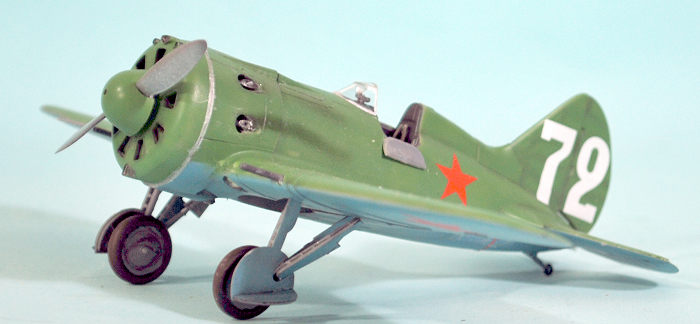 A
1939 government study found the I-16 had exhausted its potential. The addition
of armor, radio, battery, and flaps during its evolution exacerbated rear weight
distribution problems to the point where the I-16 required considerable forward
pressure on the stick to maintain level flight; it had a tendency to enter
uncontrolled dives. Extension and retraction of the landing flaps caused a
dramatic change in the aircraft's attitude. Accurate gunfire was difficult.
A
1939 government study found the I-16 had exhausted its potential. The addition
of armor, radio, battery, and flaps during its evolution exacerbated rear weight
distribution problems to the point where the I-16 required considerable forward
pressure on the stick to maintain level flight; it had a tendency to enter
uncontrolled dives. Extension and retraction of the landing flaps caused a
dramatic change in the aircraft's attitude. Accurate gunfire was difficult.
When Operation Barbarossa erupted on 22 June 1941, 1,635 of 4,226 VVS aircraft were I-16s of all variants, fielded by 57 fighter regiments in frontier areas. After two days, of the 1,635 Polikarpov monoplanes in service on 21 June 1941, only 937 were left. By June 30, the number of I-16s in western front line units had dropped to 873.
Skilled Soviet pilots took advantage of the I-16s superior horizontal maneuverability and liked it enough to resist the switch to more modern fighters. The Bf-109, however, outclassed the I-16 in service ceiling, rate of climb, acceleration and horizontal and diving speed. The main versions of the I-16 had a maximum speed of 279–291 mph, while the Bf 109E had a maximum speed of 347–353 mph, and the Bf 109F’s speed was 372-390 plus mph. Around half of all produced I-16s were still in service in 1943, when they were finally replaced.
| THE KIT |
ICM’s I-16 Type 24 appeared in 2016. It is a downsized version of their excellent 1/32 kit. Surface detail is overall excellent and accurate, and it is the best-detailed and most accurate I-16 in 1/48 scale. The kit has decals for four different I-16s serving in 1941-42.
| CONSTRUCTION |
This kit is fairly easy to assemble; the I-16 is simple enough in design that there are not that many parts, with only two sprues. I used Eduard photoetch Soviet seat belts, but all else is out of the box.
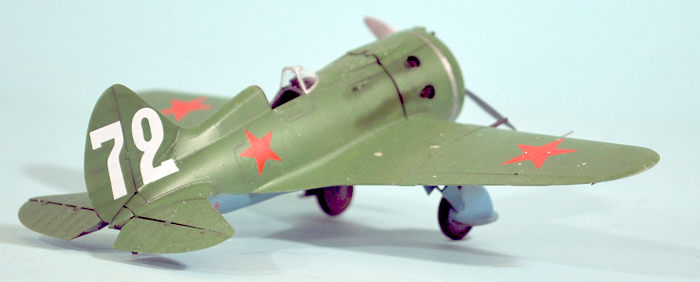 The most
difficult part of the model is bringing the wing and fuselage sub-assemblies
together. It is essential to get the upper wing/fuselage joint even, and also
the read lower wing/fuselage joint, because these two joins will need to be
filled no matter how close you get it and made to disappear, since those are not
natural “join lines” for the I-16. From the experience of doing this model, if I
do a second I will assemble the fuselage, then attach the upper wing parts
separately to work on that joint from both sides, then attach the lower wing,
being sure to get the rear wing-fuselage joint close, then attaching the rest.
The most
difficult part of the model is bringing the wing and fuselage sub-assemblies
together. It is essential to get the upper wing/fuselage joint even, and also
the read lower wing/fuselage joint, because these two joins will need to be
filled no matter how close you get it and made to disappear, since those are not
natural “join lines” for the I-16. From the experience of doing this model, if I
do a second I will assemble the fuselage, then attach the upper wing parts
separately to work on that joint from both sides, then attach the lower wing,
being sure to get the rear wing-fuselage joint close, then attaching the rest.
The engine is very nice, but you won’t be seeing anything if you close up the cowling. I found the exhausts got in the way of fitting the engine into the cowling, so I substituted Evergreen tube inserted from outside after the model was assembled.
| COLORS & MARKINGS |
I painted the model with gunze-Sangyo Mr. Color lacquer acrylics, using their Soviet light green and light blue paints. The decals went on without problem, but I would use an aftermarker sheet if I did another.
| CONCLUSIONS |
As I said, this is the most accurate I-16 kit available. It is not difficult to assemble, other than taking care with joining the wing and fuselage sub-assemblies, and makes up into a good model of an historically-important airplane.
Tom
Cleaver 6 April
2023 Copyright ModelingMadness.com. All rights reserved. No
reproduction in part or in whole without express permission from the editor.
Review kit courtesy of all you book buyers. If you would like your product reviewed fairly and fairly quickly, please
contact the editor
or see other details in the
Note to
Contributors.